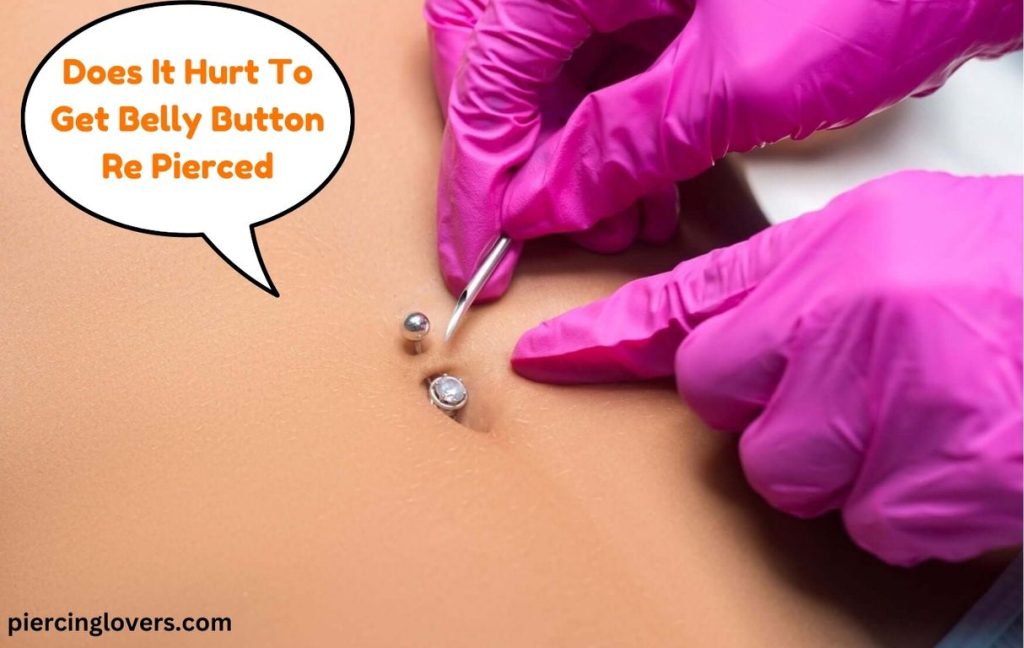Getting your belly button pierced can be an exciting way to express your personal style. But what if you’ve had your belly button pierced before, and it either closed up or you just want a fresh start? The thought of getting it re-pierced might bring up some questions, especially about pain. So, does it hurt to get your belly button re-pierced? Let’s break it down in simple terms.
Understanding The Re-piercing Process
When you get your belly button re-pierced, the process is similar to getting it done for the first time. A professional piercer will use a sterilized needle to create a new hole, often through or near the old piercing. Here’s what you can expect during the process:
- Consultation: The piercer will examine your belly button to decide the best spot for re-piercing.
- Cleaning: Your belly button area will be thoroughly cleaned to prevent infection.
- Marking: The piercer will mark the spot where the new piercing will go.
- Piercing: A needle will be used to pierce through the skin, followed by inserting the jewelry.
Does Belly Button Piercing Hurt More During The Second Time
Pain is a subjective experience, meaning it varies from person to person. Some people may find that re-piercing hurts a bit more than the first time, while others might not notice much of a difference. Here are a few factors that can influence the pain level:
- Scar Tissue: If there’s scar tissue from the old piercing, it might make the re-piercing process a bit more uncomfortable. Scar tissue is tougher than normal skin, so it can cause more resistance when the needle goes through.
- Location: If the new piercing is very close to the old one, the area might be a bit more sensitive. However, if the new piercing is in a slightly different spot, it might not hurt as much.
- Personal Pain Tolerance: Everyone has a different pain threshold. What feels like a minor pinch to one person might be quite painful to another.
Managing The Pain
While some discomfort is expected, there are ways to make the process as smooth as possible:
- Choose a Professional Piercer: Going to an experienced and reputable piercer can make a big difference. They will ensure the process is quick and as painless as possible.
- Stay Relaxed: Try to stay calm and relaxed during the piercing. Tensing up can make the pain feel worse.
- Follow Aftercare Instructions: Proper aftercare can prevent complications and help your piercing heal more comfortably. This includes cleaning the area regularly and avoiding irritation.
What to Expect After the Re-piercing
After getting re-pierced, you might experience some swelling, redness, or minor discomfort. This is normal and should subside within a few days. It’s crucial to follow your piercer’s aftercare instructions to ensure proper healing and avoid infections. If you notice any signs of infection, like severe redness, swelling, or pus, contact your piercer or a healthcare professional right away.
If you notice any discoloration after the piercing then get rid of discoloration around belly button piercing by following our previous article.
Frequently Asked Questions
Q: Does getting a belly button re-pierced hurt more than the first time?
A: Pain is subjective and varies from person to person. Some people may find re-piercing more painful due to scar tissue, while others might not notice a significant difference.
Q: Why might re-piercing hurt more than the original piercing?
A: If there’s scar tissue from the old piercing, it can make the process more uncomfortable. Scar tissue is tougher than normal skin, which can cause more resistance when the needle goes through.
Q: How can I minimize pain during the re-piercing process?
A: Choosing an experienced piercer, staying relaxed, and following proper aftercare instructions can help minimize pain. Some people also find that taking a deep breath during the piercing helps.
Q: Will re-piercing in the exact same spot hurt more?
A: Piercing through scar tissue in the exact same spot can be more painful. However, if the new piercing is slightly to the side of the old one, it might hurt less.
Q: How long does it take for the pain to subside after re-piercing?
A: Some swelling, redness, and minor discomfort are normal for a few days after the re-piercing. Pain should gradually decrease within a week.
Q: Is it normal to feel nervous about getting re-pierced?
A: Yes, it’s completely normal to feel nervous. Discussing your concerns with your piercer can help you feel more comfortable and prepared.
Q: Can I use numbing cream to reduce pain during re-piercing?
A: Some piercers may allow the use of numbing creams, but it’s best to consult with your piercer beforehand. They can provide guidance on what’s safe and effective.
Q: What can I do if the pain persists after re-piercing?
A: If you experience severe or persistent pain, consult your piercer or a healthcare professional. It could be a sign of infection or other complications that need attention.
Q: Are there any risks associated with belly button re-piercing?
A: As with any piercing, there are risks of infection, rejection, or migration. Following proper aftercare instructions and choosing a reputable piercer can minimize these risks.
Final Words
Getting your belly button re-pierced can involve some discomfort, especially if there’s scar tissue. However, many people find the pain to be manageable and worth it for the end result. By choosing a skilled piercer and following proper aftercare, you can minimize pain and enjoy your new piercing with confidence. Remember, the experience is different for everyone, but the excitement of having a new belly button piercing often outweighs the temporary discomfort.




